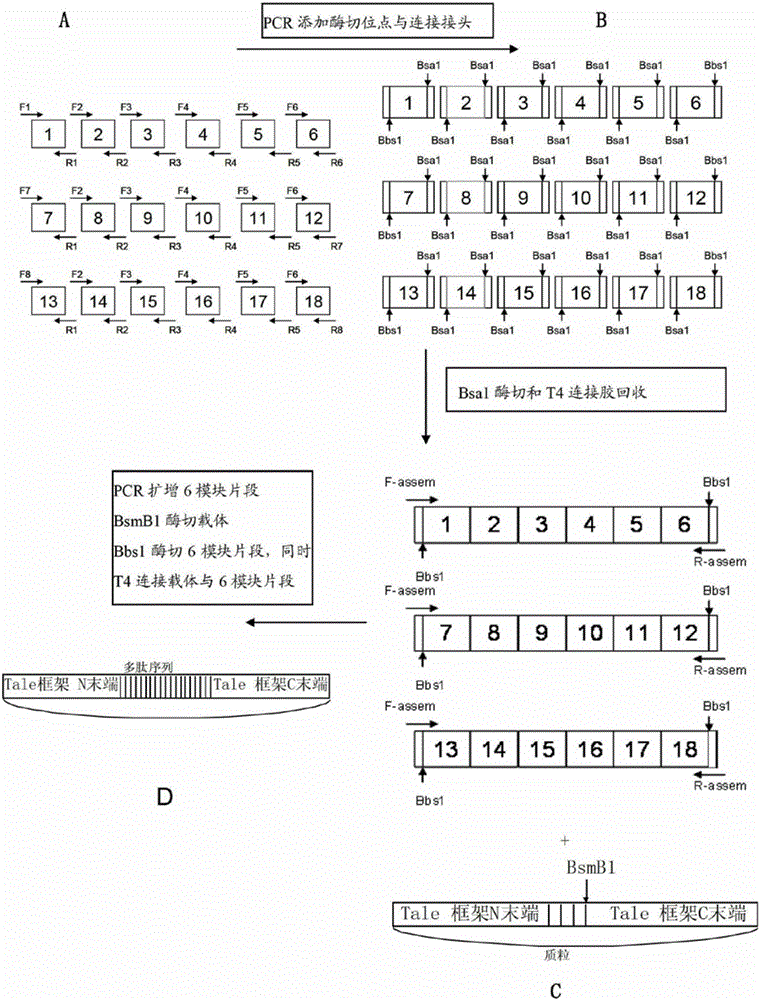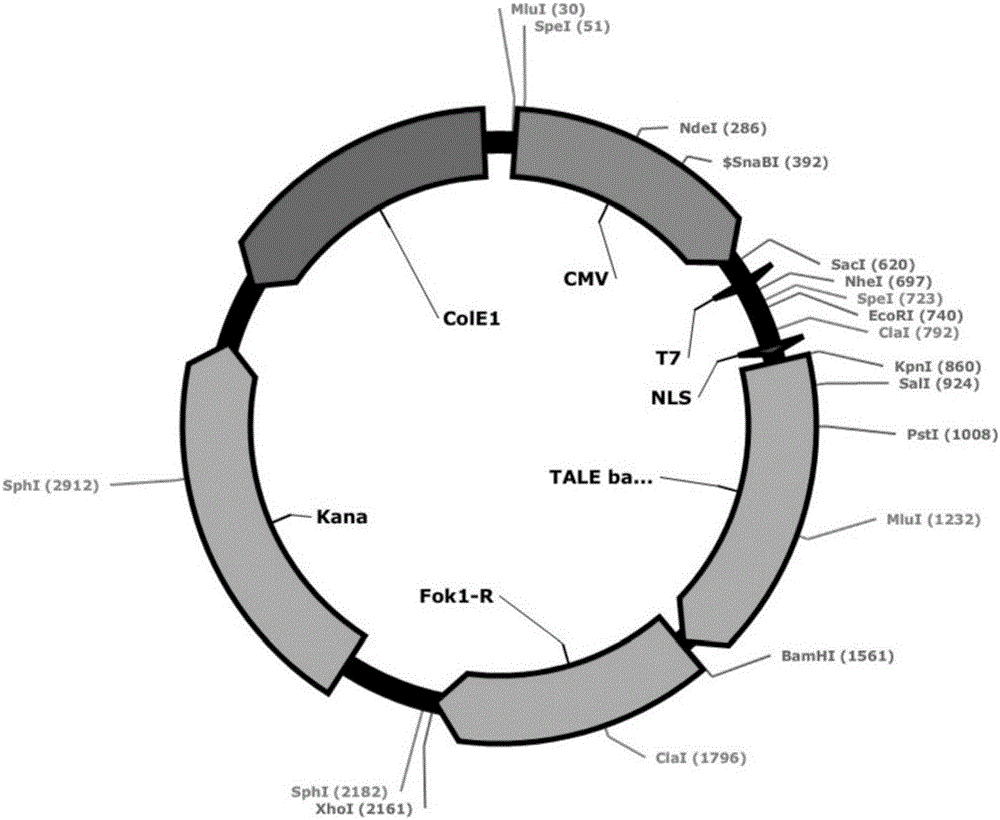Pair of transcriptional activator-like effector nucleases (TALEN) as well as encoding gene and application thereof
A nuclease, a pair of technology, applied in the field of genetic engineering, to achieve the effect of high targeting efficiency, high accuracy and strong specificity
- Summary
- Abstract
- Description
- Claims
- Application Information
AI Technical Summary
Problems solved by technology
Method used
Image
Examples
Embodiment 1
[0035] The design of embodiment 1 TALENs target sequence
[0036] 1. Download the human Pax6 gene (GENE ID: 5080) from NCBI;
[0037] 2. Design primers and PCR amplify the targeting site fragments on the genome, and sequence them. The PCR primers and sequencing primers are shown in Table 1;
[0038] Table 1
[0039]
[0040] 3. Design TALENs recognition sequence (target sequence):
[0041] According to the sequence obtained by sequencing, the recognition sequence of TALENs was determined according to the following principles:
[0042] (1) The 0th base is T (the base before the first in the recognition sequence is the 0th);
[0043] (2) The last base is T;
[0044] (3) The length of the recognition sequence is between 13-19;
[0045] (4) The length of the spacer sequence (Spacer) between the two recognition sequences is controlled between 14-21 (12, 13 are also possible, but the efficiency may be low).
[0046] The position of the designed target sequence is as follows...
Embodiment 2
[0049] Example 2 Connection between TALENs recognition modules and construction of recombinant vector
[0050] 1. Acquisition of TALENs identification module (modular)
[0051] (1) Synthesize four recognition modules NI, NG, HD, and NK that recognize bases A, T, C, and G respectively. The sequences are shown in Table 3.
[0052] table 3
[0053]
[0054]
[0055] (2) Connect the four fragments into the pEASY-B vector (purchased from Beijing Quanshijin Co., Ltd.), and directly connect the blunt ends. The connection method is as follows:
[0056] ①Take 3 μL of PCR product;
[0057] ② Add 1 μL pEASY-B vector;
[0058] ③25℃, 7min;
[0059] ④Transform DH5a competent cells and spread on agar plates containing kanamycin;
[0060] ⑤Pick clones, extract plasmids in a small amount, digest, sequence and verify, and finally obtain the recognition modules NI, NG, HD, and NK connected to the vector pEASY-B.
[0061] 2. Identify connections between modules
[0062] Connection st...
Embodiment 3293
[0129] Gene knockout in embodiment 3293T cells
[0130] 1. Plasmid transfection
[0131] (1) Add 100 μL Matrigel to each well of a 6-well plate, shake it back and forth to make it cover the bottom of the entire well, and place it in 5% CO 2 30min in the incubator.
[0132] (2) Aspirate the culture medium in the T25 flask where 293T cells were cultured, and once in PBS, add 1mL of 0.25% trypsin, shake back and forth to make it evenly cover the bottom of the flask, and place in 5% CO 2 5min in the incubator.
[0133] (3) After the digestion was completed, 1 mL of 10% DMEM was added to neutralize the trypsin, and the digested cells were transferred to a 15 mL centrifuge tube, and the cells were counted and centrifuged at 1200 rpm for 5 min.
[0134] (4) The cells were resuspended with an appropriate amount of 10% DMEM, and 2 million 293T cells were placed in a 6-well plate on which Matrigel had been laid, and 2 mL of fresh 10% DMEM was added.
[0135] (5) Passage and transfec...
PUM
 Login to View More
Login to View More Abstract
Description
Claims
Application Information
 Login to View More
Login to View More - R&D
- Intellectual Property
- Life Sciences
- Materials
- Tech Scout
- Unparalleled Data Quality
- Higher Quality Content
- 60% Fewer Hallucinations
Browse by: Latest US Patents, China's latest patents, Technical Efficacy Thesaurus, Application Domain, Technology Topic, Popular Technical Reports.
© 2025 PatSnap. All rights reserved.Legal|Privacy policy|Modern Slavery Act Transparency Statement|Sitemap|About US| Contact US: help@patsnap.com



